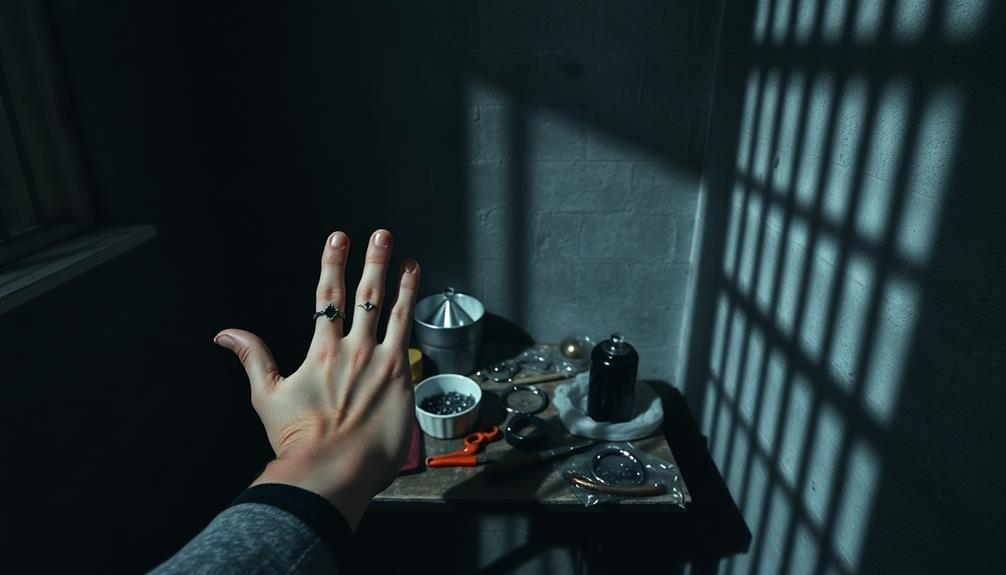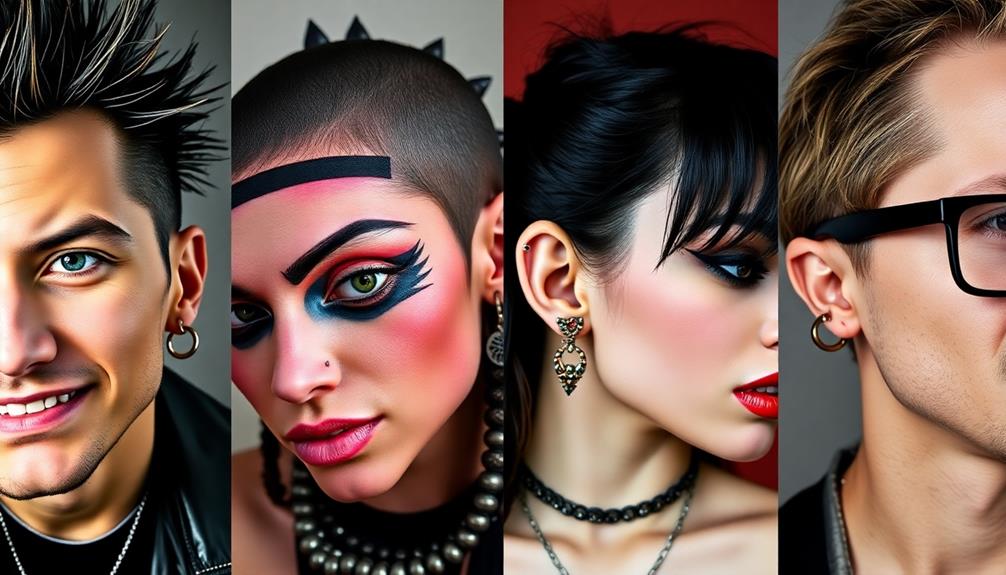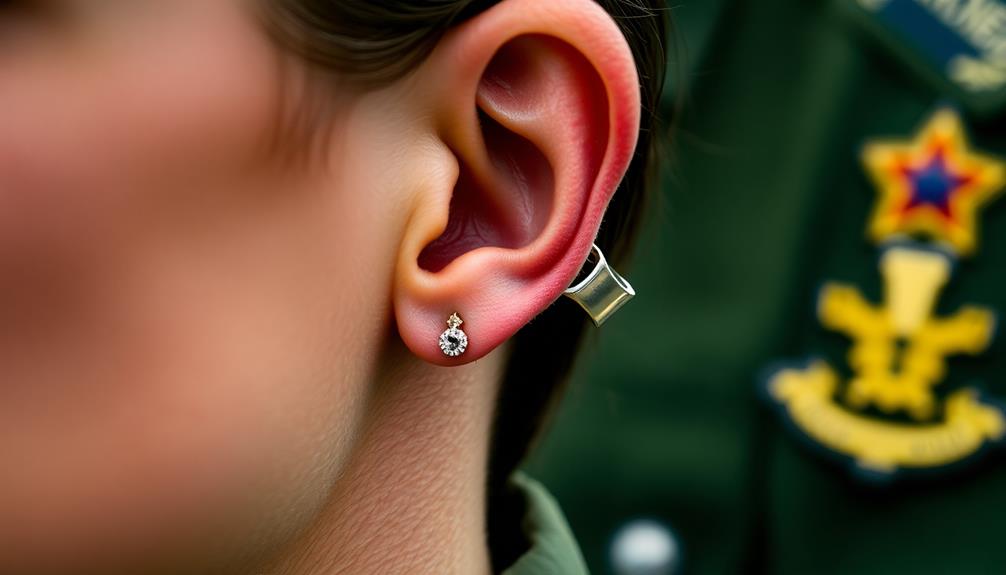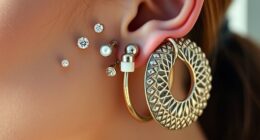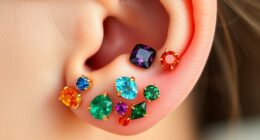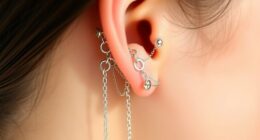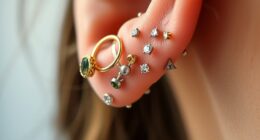When it comes to piercings in prison, you'll find strict regulations in place. Generally, body piercings are considered contraband due to security concerns, leading to their removal upon entry. Some facilities may allow plastic alternatives. Inmates often flip septum piercings up inside the nose or cover them temporarily when necessary. Piercings can signify rebellion and personal expression, deeply impacting an inmate's identity. However, unsanitary conditions can pose health risks during removal. Understanding the policies surrounding piercings can help you navigate this complex issue and maintain a sense of self in challenging circumstances. There's much more to explore on this topic.
Key Takeaways
- Body piercings are often classified as contraband in prison, requiring removal or substitution with plastic alternatives for safety.
- Concealment methods include flipping septum piercings, using tape, or complete removal to comply with facility regulations.
- Piercing removal can lead to identity loss and emotional distress, highlighting their significance as personal expression for inmates.
- Health risks such as infections may arise from improper removal, necessitating immediate medical attention for any complications.
- Inmates have rights regarding medical care and can file complaints for loss or damage to piercings during removal or transfer.
Overview of Piercing Regulations
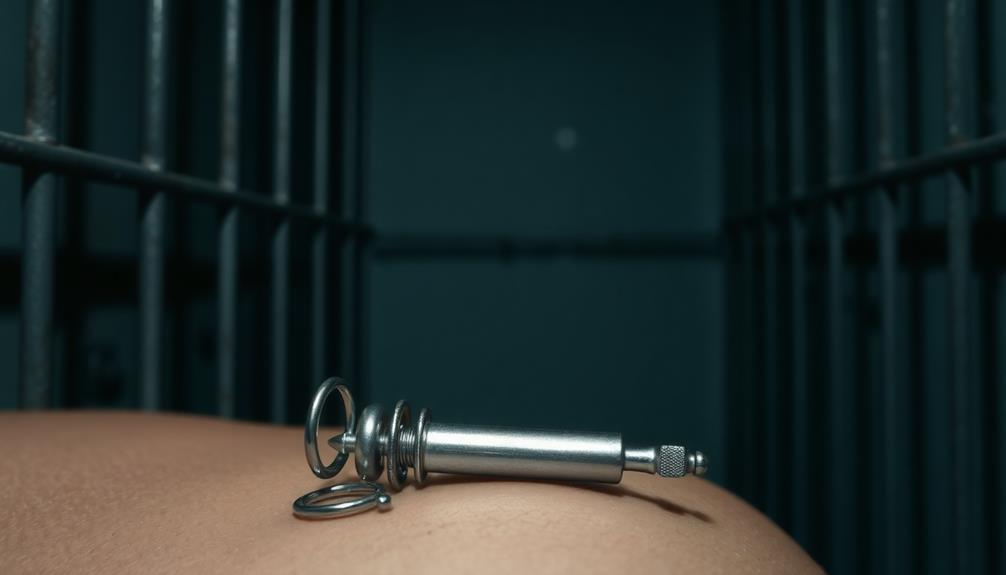
When it comes to piercing regulations in prison, understanding the rules is vital for inmates. Many facilities classify body piercings as contraband due to security risks associated with metal, meaning you'll likely have to remove them upon entry.
However, depending on the specific regulations of your facility, you might be permitted to use plastic or non-metal alternatives for your piercings.
It's important to make sure you know the policies that apply to your location, as they can vary greatly by state and institution. For example, septum piercings can often be flipped up to conceal them, while other types may require complete removal or covering.
Staff may also provide specific guidelines for managing your piercings, so don't hesitate to ask about any concerns you have.
If you face healing issues related to your piercings, it's advisable to communicate with medical personnel to receive proper care.
Being informed about these regulations not only helps you avoid potential conflicts but also allows you to express your individuality within the limits set by the prison environment.
Methods of Concealing Piercings
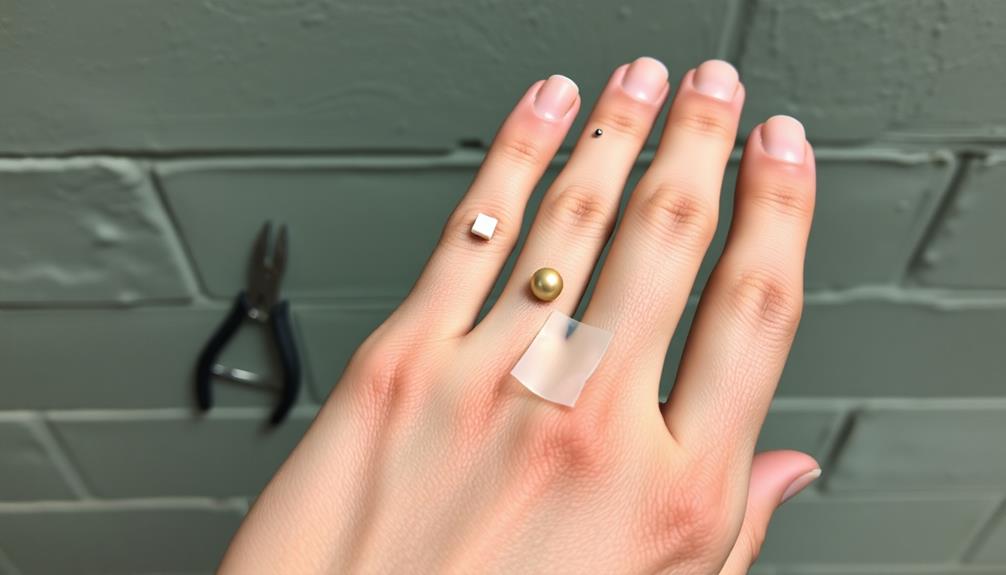
Concealing piercings in prison can be a tricky task, but there are effective methods to manage them discreetly. For septum piercings, one effective technique is to simply flip the jewelry up inside your nose, making it nearly invisible to guards and staff.
However, other types of piercings often require more drastic measures. Complete removal is sometimes necessary, and in such cases, you might need to cover the site with tape or bandages as a makeshift solution.
Some facilities provide specific guidelines on how to manage and conceal piercings while adhering to security protocols, so it's crucial to familiarize yourself with those rules.
If you're experiencing healing issues after removing piercings, don't hesitate to communicate with medical staff; they can help you avoid infections and guarantee proper care.
In certain facilities, the use of plastic or non-metal alternatives for piercings may be allowed, which can minimize security risks while still allowing you to express yourself.
Always stay informed about the regulations in your facility and adapt your methods accordingly to guarantee your safety and compliance.
Psychological Impact on Inmates
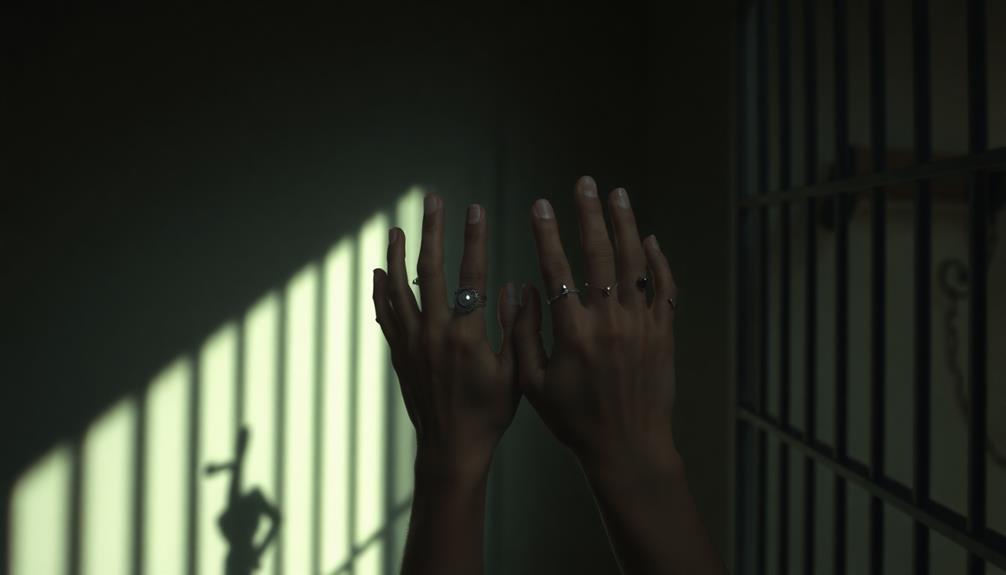
The removal of piercings upon entering prison can trigger profound psychological effects, leaving many inmates feeling a significant loss of identity. These body modifications often serve as personal expressions, and losing them can lead to distress and a disrupted sense of self. You're not just losing jewelry; you're losing part of who you are.
In the prison environment, peer pressure can shape your decisions about body piercings. You might feel the push to conform to the norms or, conversely, rebel against them. This tension can create emotional struggles as you navigate your identity within the confines of prison culture.
Support groups can help address the emotional implications of losing piercings. Engaging in discussions with fellow inmates fosters community and allows you to share your feelings about this loss.
| Psychological Effects | Coping Mechanisms |
|---|---|
| Loss of identity | Support groups |
| Feelings of distress | Open discussions |
| Disruption of self | Creative expression |
| Peer pressure | Finding common ground |
| Need for belonging | Building friendships |
Understanding these impacts can help inmates cope with the changes and reclaim parts of their identity.
Cultural Significance of Piercings
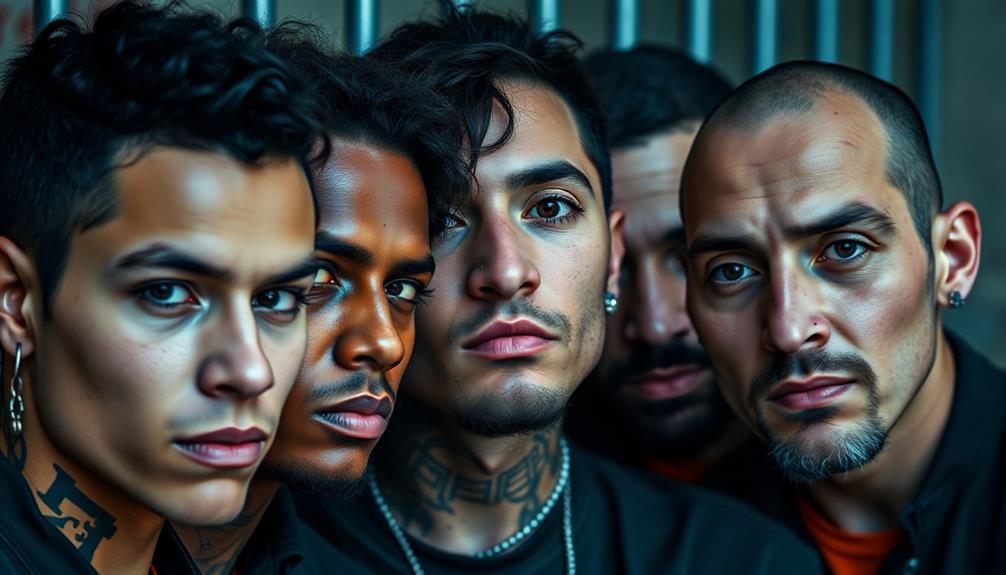
Adjusting to life in prison often means confronting not just the loss of piercings but also their cultural significance. For many inmates, piercings symbolize rebellion and personal expression, reflecting identities formed before incarceration.
You might notice that the meaning of piercings can shift dramatically among different demographic groups. Some inmates view them as markers of status or affiliation within the complex prison hierarchies.
In this environment, you may feel pressure to alter your appearance. Removing piercings could become a way to fit in, leading to a sense of identity loss and distress. While tattoos often find greater acceptance as permanent forms of self-expression, piercings are seen as more temporary and less meaningful. This preference can leave you feeling disconnected from your past.
However, discussions about piercings can also create bonds among inmates. Sharing stories about your piercings and the experiences that shaped your choices fosters a sense of community.
In this shared space, cultural backgrounds and personal histories come together, revealing the deeper significance of body modifications in a world where expression is often restricted.
Health Risks and Legal Issues
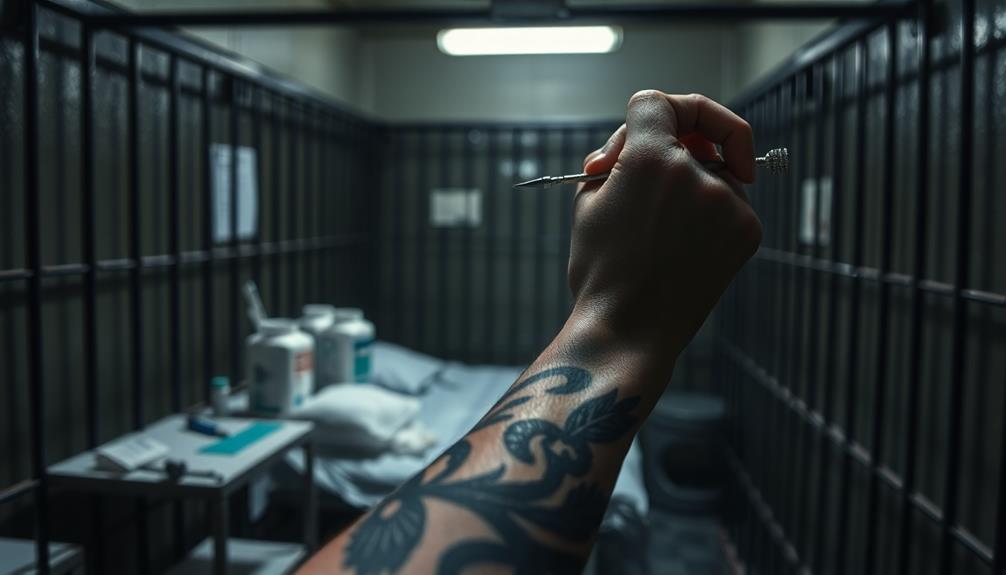
When you consider getting piercings in prison, it's crucial to be aware of the health risks, like infections from unsanitary removal.
You also need to navigate the legal regulations that often classify metal piercings as contraband, which could lead to disciplinary actions.
Understanding your rights regarding body modifications can help you make informed choices during your incarceration.
Health Risks of Infections
Inmates face considerable health risks from infections related to piercings, especially if they're removed improperly or lack proper medical care during healing.
The prison environment often presents unsanitary conditions that can increase the likelihood of infections during the removal process. If you or someone you know experiences complications like swelling, redness, or discharge after a piercing, it's imperative to seek medical attention immediately. These symptoms can indicate an infection that medical staff must address.
Policies surrounding the removal of piercings can vary greatly by facility, affecting the availability of necessary medical resources. Some prisons may have strict rules that complicate timely medical intervention.
Understanding your rights regarding body modifications is essential; if you're aware of these rights, you can better advocate for the care you need.
Without adequate medical attention, even minor infections can escalate, leading to serious health issues. Being proactive about your health is fundamental, so don't hesitate to report any concerns about your piercings.
Legal Regulations Overview
Understanding the legal regulations surrounding piercings in prison is essential for maneuvering the complexities of body modifications while incarcerated. Many facilities classify piercings as contraband due to the security risks associated with metal, including their potential use as weapons. This often leads to mandatory removal upon entry, which can pose significant health risks if removal practices aren't sanitary. Infections and complications during the healing process can arise, making it vital to be aware of how piercings are handled.
Legal implications regarding piercings can vary widely by state and facility. Some prisons may allow non-metal alternatives, while others might strictly prohibit all forms of body modifications. Policies typically align with the prison's security protocols and your behavior, affecting your ability to keep or receive personal items like piercings.
Importantly, you have the right to communicate any health concerns related to your piercings to medical staff. This underscores the need for awareness regarding your rights and the procedures in place for body modifications. Understanding these regulations can help you navigate the challenges of expressing your identity while adhering to prison policies.
Rights of Inmates
Steering through the complexities of piercings in prison also involves knowing your rights, especially concerning health risks and legal issues. You have the right to medical attention for any health risks that arise from unsanitary removal or neglect of your piercings, which can lead to infections needing treatment.
It's essential to understand that legal implications of possessing piercings can vary considerably between states and facilities. Many institutions classify them as contraband, often enforcing removal upon entry.
You should stay informed about your rights regarding body modifications since policies on piercings differ greatly across various prison systems. These policies can impact your ability to express yourself personally.
If a piercing becomes infected, it's important to communicate promptly with medical staff for appropriate care, reinforcing your health rights within the prison environment.
Additionally, if you experience loss or damage to your piercings during the removal process, you can file complaints through the prison's complaints system. This process emphasizes your right to seek redress for property issues, ensuring you're not left without recourse for any violations of your rights.
Property Management Policies
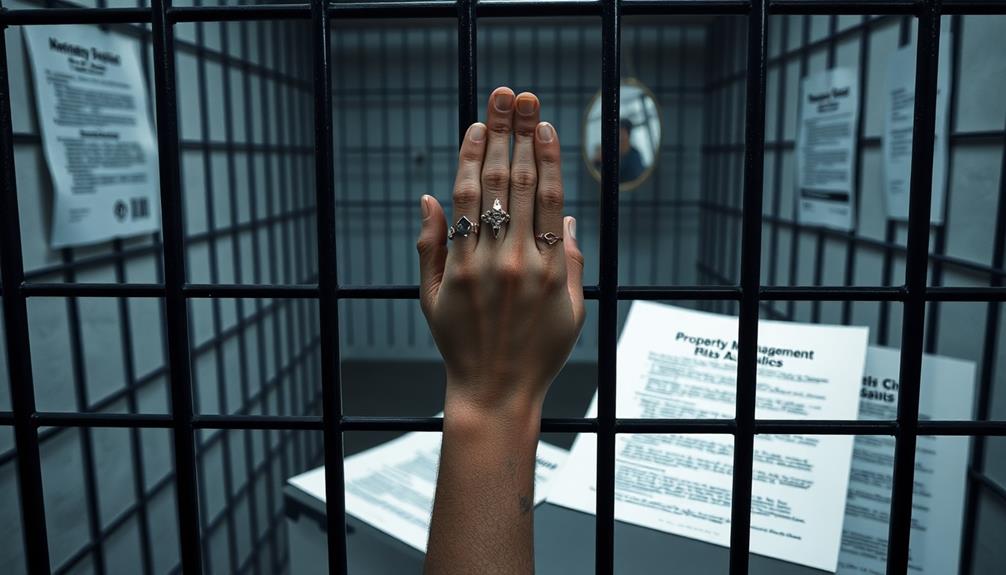
In prison, you need to understand the rules about what you can keep and how to manage your belongings.
You're allowed specific personal items based on your incentive level, and there are strict protocols for transferring property.
If something goes missing or gets damaged, you can file a complaint to address the issue.
Inmate Property Regulations
Many inmates face strict regulations regarding their personal property while incarcerated. Each facility has its own rules, which can vary greatly based on your incentive level. This can affect the number and type of items you're allowed to keep, including clothing and other personal belongings.
Property management policies require you to have all items recorded on a property card. You'll need to sign this card to acknowledge receipt of your belongings.
If you have excess property beyond the volumetric control limits—two standard boxes weighing no more than 15 kg each—you can request temporary storage from prison staff, but approval is essential.
Families are often limited to sending specific items, like books, while other personal property typically requires exceptional circumstances for approval.
If you experience lost or damaged property, you can file a complaint. Make sure to include detailed information about the items in your complaint, as the facility must respond within a specified timeframe.
Understanding these regulations can help you navigate the complexities of managing your property effectively while in prison.
Allowed Personal Items
Personal items allowed in prison vary greatly based on facility rules and your incentive level, which can range from standard to enhanced or basic. Each facility enforces specific regulations that dictate what you can keep.
For personal hygiene items, you'll need to adhere to strict design and branding restrictions to maintain security and safety.
Writing materials, books, and magazines are generally permitted across all incentive levels, allowing you to stay connected to the outside world. If you're at a higher incentive level, you might be able to enjoy additional items like musical instruments and hobby supplies, giving you a chance to express yourself creatively.
When it comes to clothing and footwear, the allowances can differ widely. Personal clothing may only be permitted at the governor's discretion, depending on your incentive level. Certain items, such as black clothing and stiletto heels, are outright banned.
Family and friends can send books, but other personal items usually require exceptional circumstances. Additionally, all incoming items need to fit within volumetric control limits for transfer, ensuring that your space remains organized and secure.
Property Transfer Protocols
Transferring property between facilities requires strict adherence to established protocols to guarantee that inmates' belongings are managed correctly. Each inmate must carry their property card during the transfer, confirming that a consistent record of personal items follows them.
Property bags must be secured with a unique security seal and shouldn't exceed 15 kg to comply with transfer regulations.
If you have excess property beyond these limits, it can be temporarily stored with the necessary approvals. You'll receive information about local storage arrangements upon your arrival at the new facility.
Here are some key points to remember about property transfers:
- The discharging prison is responsible for sending any excess property within four weeks, barring exceptional circumstances.
- If you experience issues, such as lost or damaged property during transfers, you can file a complaint through the prison complaints system. Make sure to include detailed information about the missing items, including purchase details and their value.
- Keeping your property organized and documented can prevent complications during transfers.
Understanding these protocols helps facilitate a smoother changeover for your belongings between facilities.
Clothing and Personal Item Rules

In prison, clothing and personal item rules are strictly enforced to maintain security and order. You'll typically wear prison-issued clothing, with any personal attire allowed at the governor's discretion based on your incentive level and specific prison rules.
Prohibited items include black garments, hoods, and padded clothing, while permitted footwear covers shoes, trainers, sandals, and slippers—stiletto heels and steel toe caps are off-limits.
For personal hygiene, you must stick to items that meet design and branding restrictions set by the prison. This guarantees they comply with security standards.
As for personal items, you can have essentials like writing materials, books, and magazines. If you show good behavior and reach higher incentive levels, you might earn the privilege to possess additional items, such as musical instruments and hobby supplies.
The prison's Incentives Policy Framework outlines the guidelines regarding what personal items you can have and how many, all depending on your behavior and incentive level.
Adhering to these rules is vital, as they directly impact your daily life and privileges while incarcerated.
Addressing Property Loss Concerns

Property loss can be a significant concern for inmates, especially when maneuvering strict rules around personal items. You may find that the procedures for addressing lost or damaged property are essential to understanding your rights. If you experience property loss, you can file a complaint through the prison complaints system. Be prepared to provide detailed information about the lost items, including purchase details and their estimated value.
Here are some key points to reflect on:
- Complaints about property lost during transfers are taken seriously, with a response time limit of 10 working days.
- The Prison Service usually doesn't accept responsibility for items lost unless it's due to staff negligence during transfers.
- If you're not satisfied with the response, you can appeal to the Prison and Probation Ombudsman or pursue claims through County Court.
To safeguard the security of your belongings, property checks should be conducted promptly in front of two staff members. Staying informed about these processes can help you navigate the complexities of property loss within the prison system.
Frequently Asked Questions
Are You Allowed to Wear Piercings in Prison?
You may not be allowed to wear metal piercings in prison due to security concerns. Some facilities permit non-metal alternatives, but it's essential to check specific regulations to understand what's acceptable in your location.
What Is a Secret Piercing?
Imagine wearing a mask at a masquerade; that's what a secret piercing feels like. It's a hidden expression of identity, often tucked away from view, allowing you to embrace individuality despite restrictions.
Can Prison Inmates Wear Jewelry?
No, prison inmates typically can't wear jewelry. Most facilities require them to remove all personal items, including jewelry, upon entry. This restriction limits self-expression and can negatively affect their psychological well-being during confinement.
Can I Wear Earrings in Prison?
Did you know that around 70% of prisons restrict metal items? You can't wear earrings in most facilities due to security policies, but some might allow non-metal options. Always check your prison's specific regulations.
Conclusion
To sum up, piercings in prison reveal much about inmates' identities and coping mechanisms. While regulations and health risks pose challenges, the cultural significance of these adornments can't be overlooked. Have you ever considered how something as simple as a piercing could symbolize resilience and individuality in such a restrictive environment? Understanding these layers helps us grasp the complexities of life behind bars, reminding us that even in confinement, self-expression persists.
Hi, my name is Danielle, and I’m an author for piercings-body.com. I have a passion for writing and love to share my knowledge on all things body piercing-related. I’m also a huge advocate for safe body modification practices and believe everyone should be able to make informed decisions about their bodies. When I’m not writing or blogging, I enjoy spending time with my family and friends, practicing yoga, and exploring new places.

